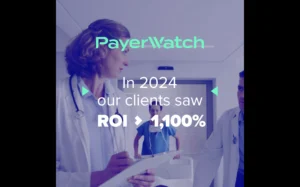WHAT IS LED PIXEL PITCH AND WHY DOES IT MATTER?
When talking about LEDs for digital signage, pixel pitch is one of the most important criteria to consider. Pixel pitch describes the distance between two pixels in millimeters. That distance defines a lot about the appearance and performance of LED screens. It’s also closely related to resolution.
Pixel pitch isn’t as well-known as resolution, and often they are believed to be the same. This is a big misconception. They are connected but not the same. Typically, the smaller the number the higher the resolution.
Pixel pitch, however, is not related to the size of a screen. Because two screens are the same size doesn’t mean they have the same pixel pitch.
Small vs. Large Pixel Pitch
Pixel pitch is essentially the measurement of density. A small pixel pitch indicates a greater density and less space between each pixel. This correlates to improved resolution. The larger the pixel pitch, the less dense. Large pixel pitch displays pale in comparison to their counterparts, but they come at a lower cost.
Why Pixel Pitch Matters in Digital Signage
Digital signage, when executed well, should be driven by vivid imagery with the most optimal viewing distance. The lower the pixel pitch, the more defined the imagery. This is essential if the signage is something a viewer would stand close to; the resolution doesn’t degrade the closer the viewer gets. You wouldn’t want a screen where a viewer can see the black space between pixels, so you’ll want a very small pixel pitch.
Application Should Determine Pixel Pitch
When choosing an LED screen for your project, application should drive what kind of pixel pitch you select. Smaller pixel pitch is best for up-close interaction. Whereas, if the screens will be further away or higher up on a wall, a larger pixel pitch will suffice. Higher pixel pitch delivers improved visuals from a further distance. In these situations, increasing the density of pixels will have no effect, so it’s best to save on budget here.
Determining Acceptable Viewing Distances
If you aren’t sure exactly what the viewing distance will be in your project, there are some practical guidelines you can follow. Not an exact science but considered an industry standard is that 1mm in pitch equals 8 feet of viewing distance.
The 10x rule is a way to estimate visual acuity distance. Divide the approximate distance in feet that a viewer would be standing from the video wall or single display by 10. This should give you a rough number to work from. Take this as a general recommendation as many other factors may be influencing the decision, like budget and type of content.
Pixel pitch should be a top of the list consideration when designing your LED display solutions. The crux of the decision is based on where it will live and how close viewers will be. PixelFLEX manufactures LED screens in a variety of pixel pitch measurements, ranging from 1.2mm to 16mm, covering the gamut of possible applications.
Browse all of the PixelFLEX LED display solutions here.
Read more at pixelflexled.com









